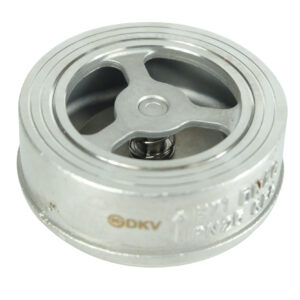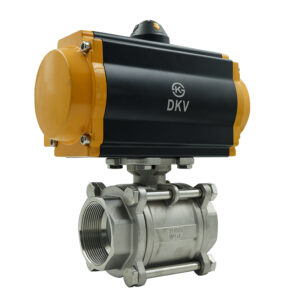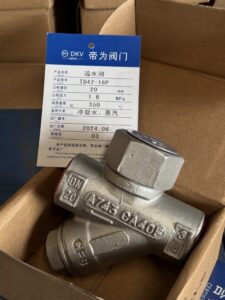
What Is a Check Valve and How Does It Work?
What Is a Check Valve and How Does It Work? Introduction — Why Check Valves Matter in Industrial Systems In every pipeline system, fluid needs
In every pipeline system, fluid needs to move in one direction — not backward.
That’s exactly what a check valve does. It’s a small, simple device that prevents reverse flow, protecting pumps, compressors, and entire systems from damage.
Whether you’re handling water, steam, oil, or gas, a properly selected check valve can save you from costly downtime and repairs.
In this guide, we’ll explain what a check valve is, how it works, its main types, advantages, and where to use it. The goal is to help engineers and project buyers understand it clearly and make better purchasing decisions.

A check valve—also known as a non-return valve (NRV) or one-way valve—is a valve that allows fluid to flow in only one direction.
It automatically closes when the flow reverses, preventing backflow that could damage upstream equipment or contaminate the system.
Unlike gate or ball valves, check valves do not require manual or electric operation. They work purely based on pressure differences.
When pressure from the inlet side is higher, the valve opens; when the pressure drops or reverses, it shuts automatically.
Example: In a water pump line, a check valve keeps water from flowing back into the pump when it’s turned off — preventing impeller damage and loss of prime.
The working principle is simple: the valve opens and closes based on fluid pressure. When fluid flows forward, it pushes the disc, ball, or piston away from the seat — creating a passage.
When flow stops or reverses, the disc or ball falls back onto the seat, sealing the valve and blocking the return path.
The key components of a check valve include:
Tip for engineers: Always install check valves in the direction of flow indicated by the arrow on the body — installing them backward will completely block the system.
There are several designs of check valves, each suited for specific applications:
Each type offers different sealing characteristics, flow resistance, and installation flexibility.





Check valves are used anywhere fluid must move in one direction. Some typical applications include:
Case Study: A refinery installed dual-plate wafer check valves to replace old swing types. The result — a 40% reduction in water hammer and easier maintenance.
Buyer’s Note: The simplicity of check valves doesn’t mean they’re “one-size-fits-all.” The wrong type or material can lead to leakage or early wear.
Pro tip: Always consider the cracking pressure—the minimum pressure required to open the valve. This ensures smooth operation under low-flow conditions.
Maintenance Tip: Periodically inspect and clean the valve—especially in systems with dirty or particulate fluids.
Check valves are available in different materials, including:
High-quality valves from DKV Valve comply with CE and ISO 9001 standards and come with full test reports. Each valve undergoes a pressure test before shipment.
Though small and simple, check valves play a major role in protecting industrial systems. They ensure one-way flow, prevent costly damage, and maintain safety.
Understanding how they work and where to use each type will help you design more reliable and efficient pipelines.
At DKV Valve, we offer a complete range of check valves—from wafer and swing types to spring-loaded inline models—manufactured to international standards and backed by a 2-year warranty.
Looking for reliable, long-lasting check valves for your project?
Contact DKV Valve to get free datasheets, price quotes, or samples.
Our engineering team can help you choose the best model for your pressure, flow, and medium.

What Is a Check Valve and How Does It Work? Introduction — Why Check Valves Matter in Industrial Systems In every pipeline system, fluid needs

What Is a Pneumatic Valve ? In modern industries, the performance of a valve often determines the efficiency, reliability, and safety of a process system.Pneumatic

What Is a Steam Trap & How Does It Work? Introduction — The Hidden Hero in Steam Systems In every industrial steam system — whether

Why Use a Globe Valve Instead of a Gate Valve? A Practical Guide for Engineers & Procurement Managers Introduction — Making the Right Valve Choice

What Is the Main Advantage of a Butterfly Valve? Introduction — why this question matters When you plan an industrial piping system, valve selection affects

Electric Valves: Comprehensive Guide for Industrial Applications In modern industrial automation, electric valves play a critical role in regulating fluid flow with precision and reliability.
Poly Center T41601, Le Cong Town, Shunde District, Foshan City, Guangdong Province, China
We will contact you within 1 working day, please pay attention to the email with the suffix “@dkvchina.com”.
We will contact you within 1 working day, please pay attention to the email with the suffix “dkvchina.com”.